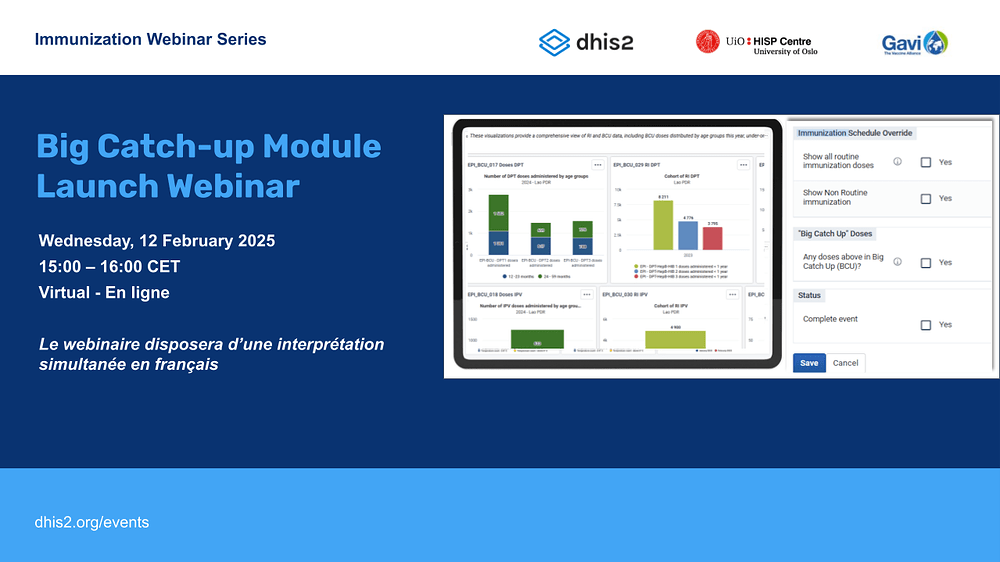We’re excited to invite you to our upcoming DHIS2 Gavi Quarterly Webinar, where we will spotlight the Big Catch-up (BCU) — a global initiative supported by Gavi, WHO, UNICEF, and partners to restore immunization coverage to pre-pandemic levels and strengthen health systems worldwide.
What to Expect?
- Introduction to the Big Catch-up initiative’s goal, objectives, and progress,
- The official launch of the DHIS2 BCU module, developed in collaboration with Gavi, UNICEF, WHO, and HISP to support reporting and monitoring of catch-up doses and data-driven decision-making,
- Live demo and discussion on how the DHIS2 BCU module enhances the DHIS2 Immunization Toolkit to help countries improve coverage and catch up on missed vaccinations.
This module is designed to support all countries implementing catch-up strategies — whether as part of the BCU or broader immunization recovery efforts. This is an opportunity to engage with experts, ask questions, and explore how digital solutions can help countries close immunization gaps. Don’t miss out: register now, share this invitation with relevant colleagues, and join us in advancing immunization efforts globally!
![]() Webinaire : Lancement du module Big Catch-up - Mercredi 12 février, de 15h00 à 16h00 CET
Webinaire : Lancement du module Big Catch-up - Mercredi 12 février, de 15h00 à 16h00 CET
Nous sommes ravis de vous inviter à notre prochain webinaire trimestriel DHIS2 Gavi, où nous mettrons en lumière le Big Catch-up (BCU) — une initiative mondiale soutenue par Gavi, l’OMS, l’UNICEF, et leurs partenaires pour rétablir la couverture vaccinale aux niveaux d’avant la pandémie et renforcer les systèmes de santé à travers le monde.
Contenu de la session
- Introduction aux objectifs, buts et avancées de l’initiative Big Catch-up,
- Le lancement officiel du module BCU de DHIS2, développé en collaboration avec Gavi, l’UNICEF, l’OMS, et HISP pour soutenir le suivi et le rapportage des doses de rattrapage et la prise de décisions basées sur les données,
- Démonstration en direct et discussion sur la manière dont le module BCU de DHIS2 améliore la boîte à outils d’immunisation de DHIS2 pour aider les pays à améliorer la couverture et à rattraper les vaccinations manquées.
Ce module est conçu pour soutenir tous les pays mettant en œuvre des stratégies de rattrapage — que ce soit dans le cadre de la BCU ou de plus larges efforts de reprise de la vaccination. C’est une occasion d’échanger avec des experts, de poser des questions et d’explorer comment les solutions numériques peuvent aider les pays à combler les lacunes en matière de vaccination. Ne manquez pas cette opportunité : inscrivez-vous dès maintenant, partagez cette invitation avec vos collègues concernés, et joignez-vous à nous pour faire progresser les efforts de vaccination à l’échelle mondiale !
